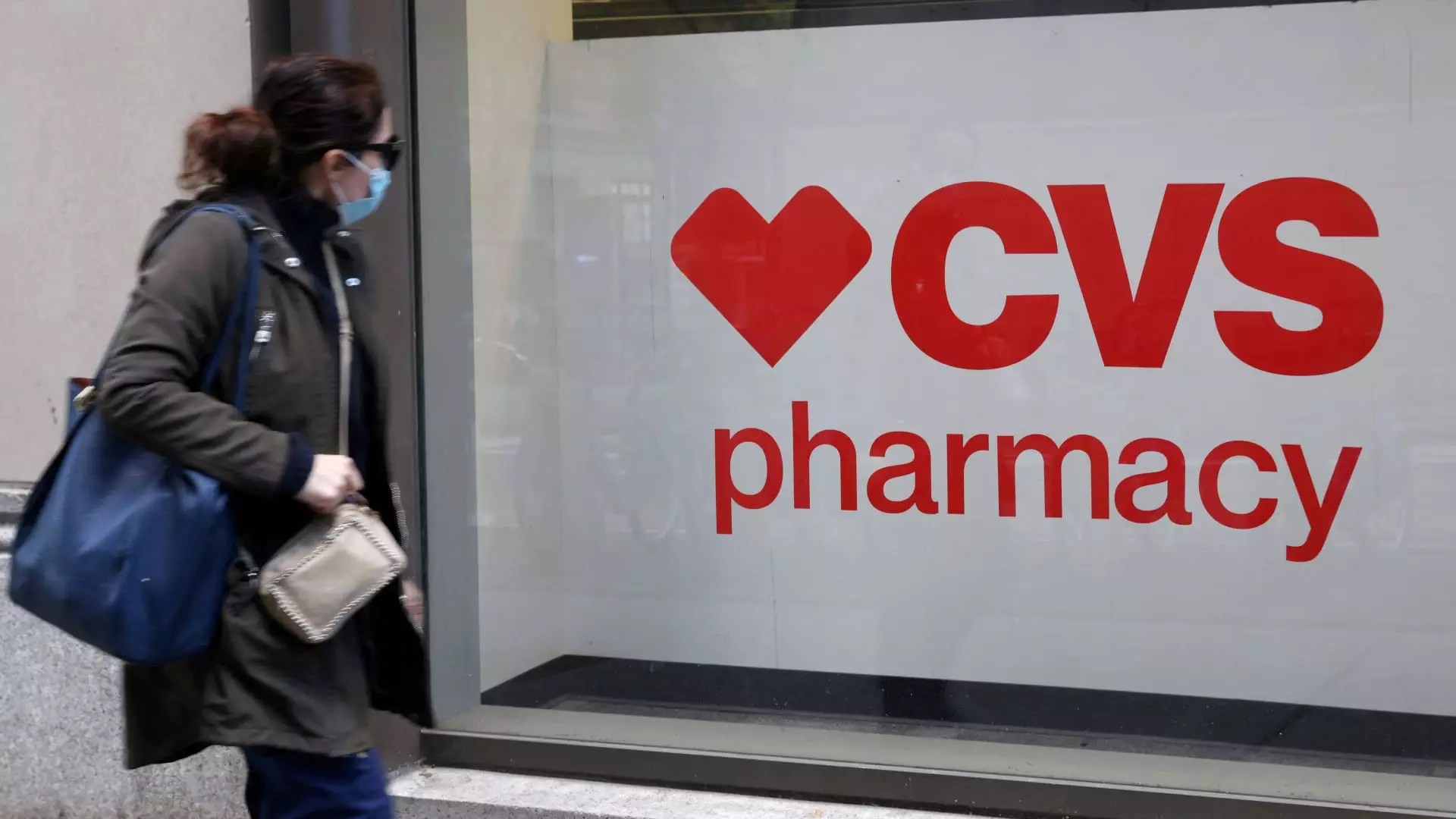CVS Health’s recent third-quarter earnings report has painted a complex picture for the once-dominant retail drugstore chain. Reporting its results for the first time under CEO David Joyner, the company revealed a significant struggle with rising medical costs that have impacted profitability. As a result, CVS has opted to withhold formal financial forecasts, indicating ongoing challenges ahead. This cautious approach signals to investors that the road to recovery could be long and arduous, especially after the stock has plummeted nearly 27% this year, compounded by consecutive quarterly guidance downgrades.
Joyner’s primary objective in his new role is to regain investor confidence, a goal complicated by pressures from activist investors demanding a turnaround. “Establishing credibility and earning the trust of our investors is one of my top priorities,” Joyner stated. This emphasis on achievable goals highlights a shift in strategy aimed at restoring faith in the company’s future.
The root of CVS Health’s challenges lies significantly within its health insurance division, Aetna. The increased medical costs can be traced back to a surge in hospital admissions among seniors, who have returned for treatment after postponing care during the COVID-19 pandemic. Joyner noted that while the entire healthcare industry has faced an uptick in service utilization, CVS has experienced pronounced pressure and is keenly aware of the need for stability during this tumultuous period.
The complexity of the insurance sector is illustrated by obstacles like premium deficiency reserves, which CVS stated played a pivotal role in their financial outcome. These reserves suggest a risk that future premiums may not cover the expected costs of medical claims, casting doubt on the sustainability of profitability amidst rising costs. This financial framework has prompted CVS to reevaluate its operations and costs against a backdrop of diminished margins.
In conjunction with these financial challenges, CVS Health announced pivotal leadership changes in its structure. The appointment of Steve Nelson as president of Aetna aims to leverage his experience from UnitedHealthcare to navigate CVS through its current financial woes. This leadership shake-up reflects a proactive approach in aligning the company’s strategic priorities with experienced executives who have a depth of knowledge in managing healthcare costs effectively.
Moreover, the expansion of Prem Shah’s role to oversee retail pharmacy, pharmacy benefits, and healthcare delivery indicates a strategic restructuring aimed at integrating disparate aspects of CVS’ operations to create a more cohesive business model. Such a restructuring is necessary for refined management of higher medical costs and restoration of service quality, targeting its existing customer base more efficiently.
Despite the grim news regarding profitability, CVS reported a revenue increase to $95.43 billion for the quarter, fueled by its pharmacy and insurance segments. This 6.3% growth year-on-year represents a serious achievement amid adversity, suggesting that some foundations of the business are still strong. However, the net income fell dramatically from $2.27 billion in the previous year to just $71 million. This stark contrast highlights the critical impact of increased medical expenses.
The company’s adjusted earnings per share (EPS) of $1.09 fell significantly short of Wall Street’s expectations of $1.51. The EPS was notably affected by $1.1 billion in charges related to premium deficiency reserves, which signals possible future losses that could harm long-term financial health. The insurance segment’s performance mirrored these challenges, with a staggering adjusted operating loss reported for the quarter, presenting a concerning trend in Aetna’s operations.
In light of the challenges faced, CVS Health is poised on the brink of critical decisions that will shape its future. As it prepares for the fourth quarter, Joyner hinted at substantial releases of premium deficiency reserves, which could provide a temporary boost to financial results. However, addressing the underlying issues, particularly the management of medical expenses, remains paramount if CVS is to secure a path to recovery and regain investor trust.
With its vibrant retail pharmacy division remaining a primary focus, augmenting customer engagement through enhanced service delivery while navigating the turbulent healthcare landscape will be crucial. Moving forward under new leadership, CVS must embody agility and resourcefulness to withstand financial pressures and capitalize on its market share, which currently stands at 27.3%, an all-time high in retail pharmacy.
CVS Health’s journey through this tumultuous period will require decisive leadership, strategic reevaluation of its business operations, and a concerted effort to manage escalating costs while simultaneously enhancing service offerings.

